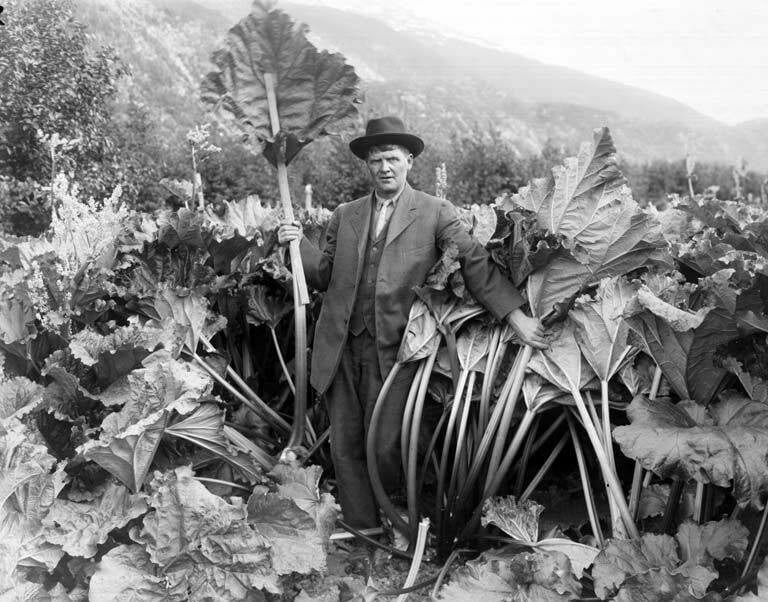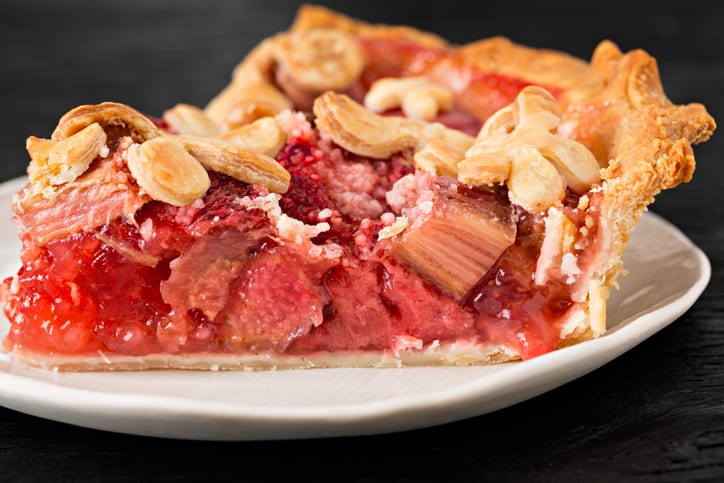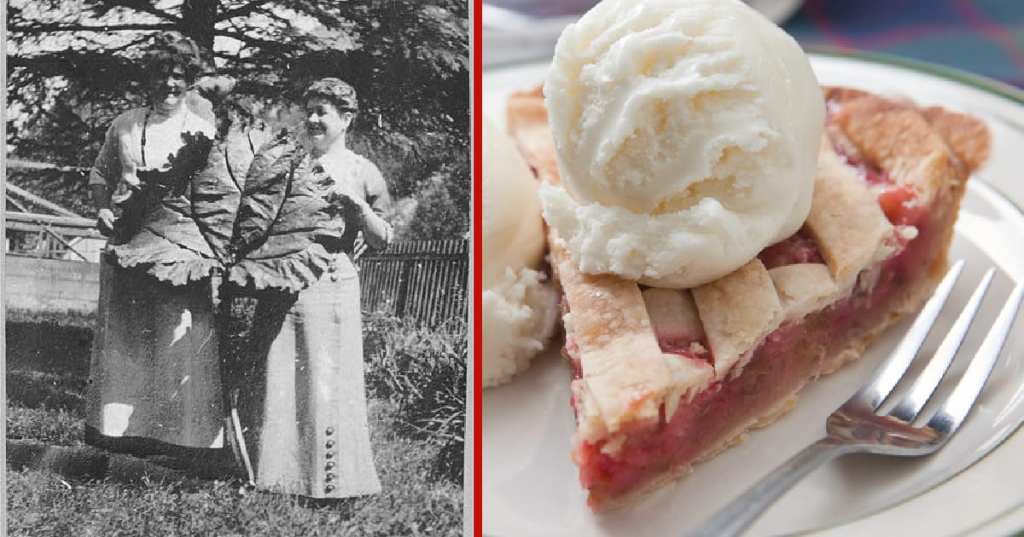Trending Now
Rhubarb is one of those flavors that divides people along pretty clean lines – you love the tart bite of it or you can’t stand the stringy nature, and there’s very little in between.
That said, you don’t have to eat it to be interested in how and where certain plant life settles in the world over, and the phrase “giant rhubarb” is enough to perk up anyone’s ears, I think.
Just in case The Happening ever, you know…happens, you want to know where the really big, really bitter plants are, I think.

Image Credit: Library of Congress
Rhubarb is a leafy plant with a sour, fruit-like stalk that’s typically cooked with copious amounts of sugar, and sometimes even mixed with a sweeter fruit, like a cherry or a strawberry, in a pie, tart, or other pastry.
When it was first “discovered” in the States, farmers latched on and grew it all across the country – but none so successfully as those who were braving the Alaskan frontier.
The farmers there were shocked and pleased to find that not only does rhubarb quite like the cold, but the 19-hour summer days also encouraged it to grow to monstrous heights.
Rhubarb likely originated in someplace chilly, like Tibet and China, where it was valued more asa medicine that as food, and from there it traveled in the pouches of healers to Russia, Western Europe, and finally to England.

Image Credit: Jewell Gardens
It wasn’t until sugar began to become widely available in the mid-1700s that people began to use the acidic and sour stems in their baking – and it was in the late 18th century that Russian trader Gregorii Shelikhov brought the plant to Alaska.
Rhubarb quickly became a sort of fruit substitute for women in Alaska, who used the stem and root to make sweet and tangy pies.
Henry D. Clark, a local farmer, became known around Skagway, Alaska, as “the Rhubarb King.” He had come to Alaska by way of Wisconsin, lured in by the promise of gold like so many, and inspiration had struck when he saw people suffering from scurvy.”

Image Credit: Public Domain
Caroline Hill, manager of his original homestead, says “we think that maybe he had rhubarb seeds in his pocket.”
He established a rhubarb farm to help mitigate a dearth of local, fresh food and was amazed to see the plants growing to giant proportions – some of the photographed leaves were more than three feet across.
Jewell Gardens, where Clark farmed, still grows his strain of rhubarb, and it also proliferates through the town. His original land was commandeered during WWII, and people gathered the rhubarb before it could be destroyed.
Even though other fresh fruits and vegetables are more readily available these days, Alaskans still retain a fondness for their huge stalks of rhubarb. It’s easy to grow and it’s good for you, and it seems uniquely suited to their climate.

Image Credit: iStock
People still growing crops of rhubarb choose plants that are a good size, sweetness, and are nice for juicing. They hope that, in addition to selling the plants, Alaska will become known for the huge varieties, and that might boost tourism.
If you want the best rhubarb pie, or lemonade, or anything with at least as much tartness and sweetness, you might want to head to Alaska.
I hear they have some pretty sweet views, too.






